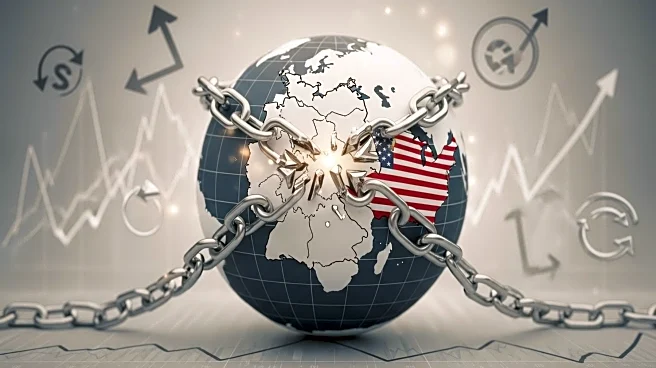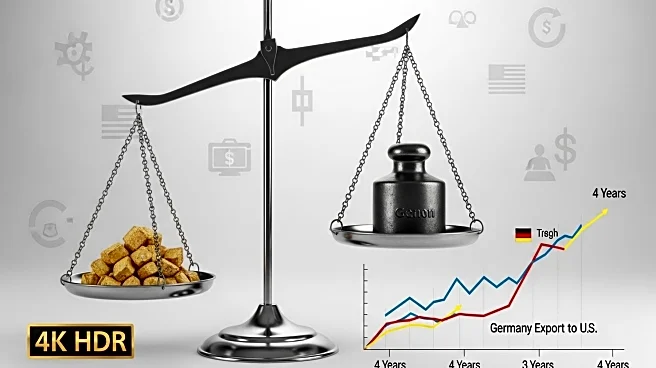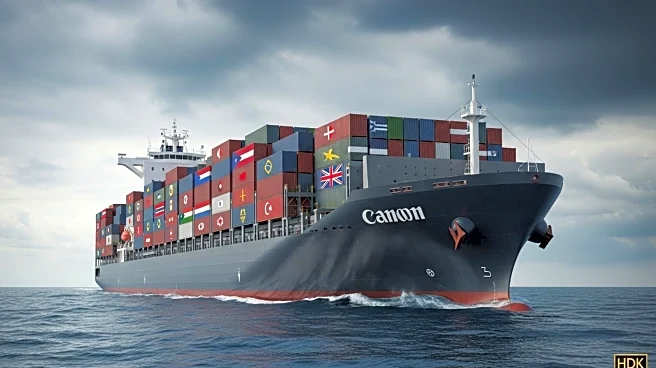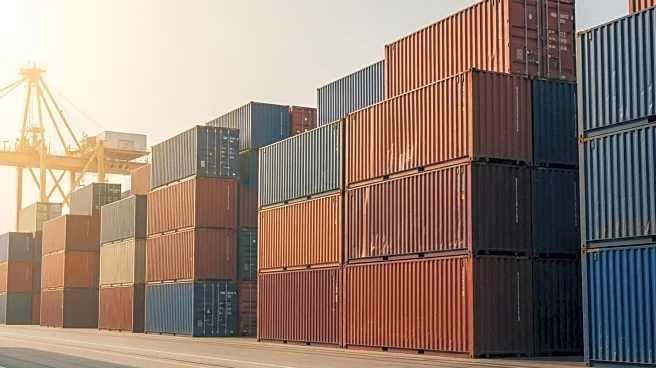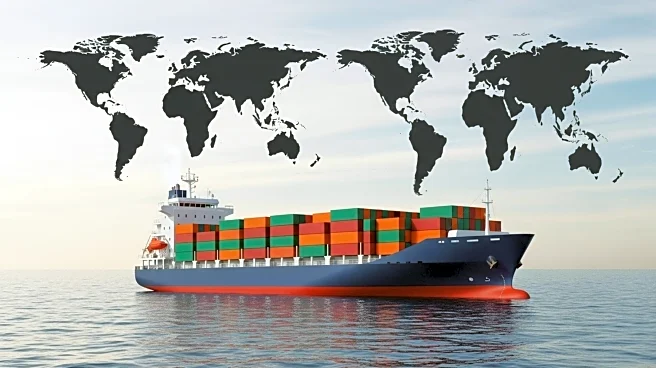What's Happening?
German exports to the United States have reached their lowest level since 2021, as President Trump's tariffs continue to impact Europe's largest economy. According to data from the federal statistics agency Destatis, exports of German goods to the US fell by 7.9 percent in July compared to the previous month, marking the fourth consecutive monthly decline. The total value of these exports dropped to 11.1 billion euros ($13 billion). Despite this decline, the US remains the top destination for German products. The tariffs have exacerbated existing challenges for Germany's export-driven economy, which is already grappling with high energy costs, competition from Asia, and weak demand. Overall, Germany's exports contracted by 0.6 percent in July, contrary to analysts' expectations of zero growth. Imports also saw a slight decrease, leading to a narrowed trade surplus of 14.7 billion euros. Exports to China, another key trading partner, also fell by 7.3 percent.
Why It's Important?
The decline in German exports to the US underscores the significant impact of President Trump's trade policies on international trade dynamics. For Germany, a country heavily reliant on exports, these tariffs pose a substantial economic challenge, potentially affecting its industrial output and employment levels. The automotive sector, a major component of Germany's economy, is particularly vulnerable due to increased competition and tariff-induced cost pressures. This situation highlights the broader implications of trade tensions on global supply chains and economic stability. As Germany navigates these challenges, the potential for a rebound in industrial production, as indicated by a 1.3 percent growth in July, offers a glimmer of hope. However, sustained recovery will depend on resolving trade disputes and adapting to shifting global market conditions.
What's Next?
Germany may need to explore alternative markets and strengthen its domestic industries to mitigate the impact of US tariffs. The potential for a cyclical rebound in German industry, as suggested by ING bank economist Carsten Brzeski, could provide some relief. However, the country must remain cautious, given the volatility and disappointments of recent years. Policymakers and industry leaders may need to engage in diplomatic efforts to address trade tensions and seek more favorable terms. Additionally, Germany might consider investing in innovation and technology to enhance competitiveness and reduce dependency on traditional export markets.
Beyond the Headlines
The ongoing trade tensions between the US and Germany reflect broader geopolitical shifts and the challenges of maintaining open global trade in a protectionist environment. The situation raises questions about the future of international trade agreements and the role of tariffs as a tool for economic leverage. It also highlights the need for countries to balance national interests with global economic cooperation. As Germany and other nations adapt to these changes, there may be long-term shifts in trade patterns and economic alliances.
